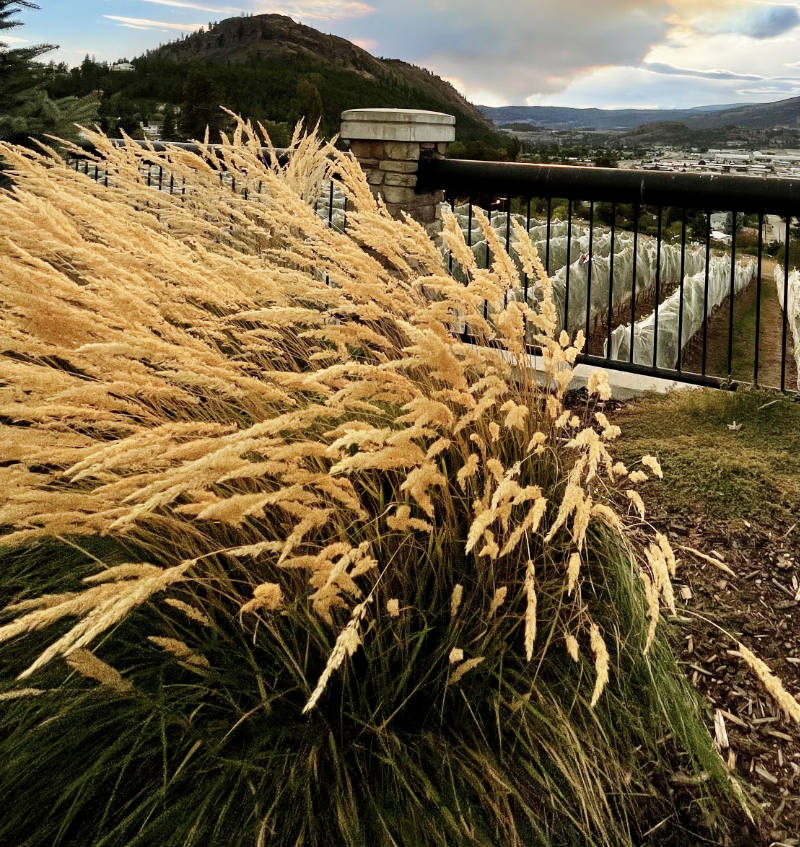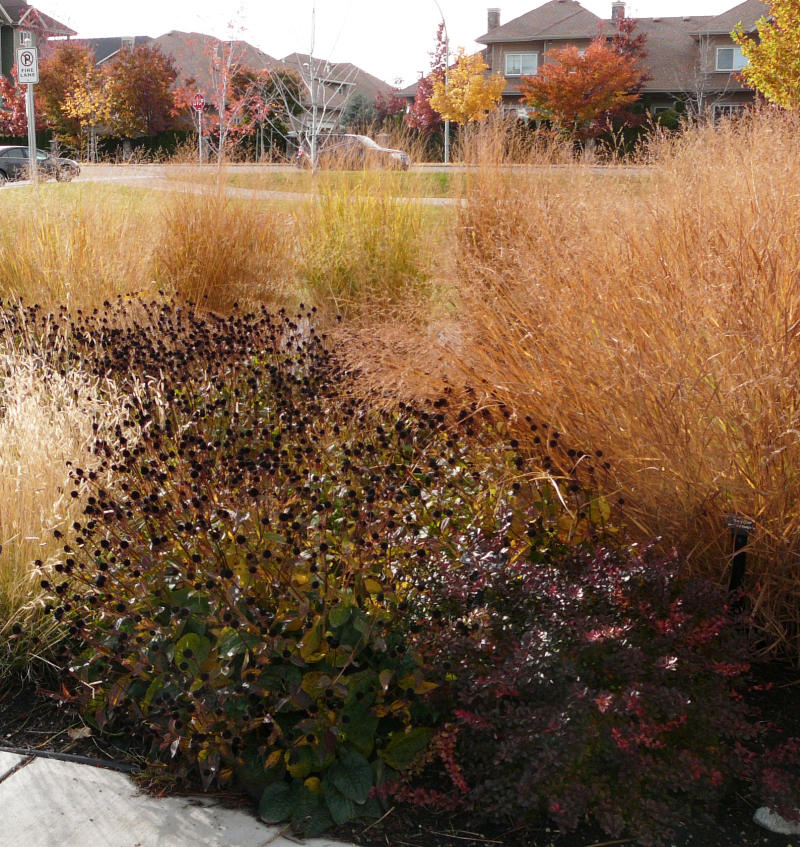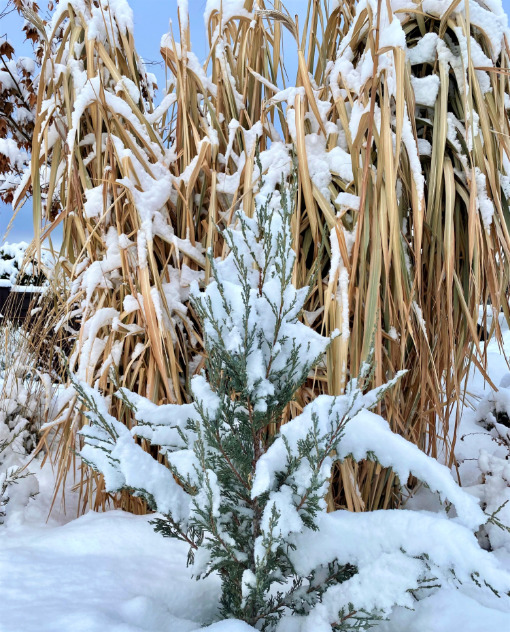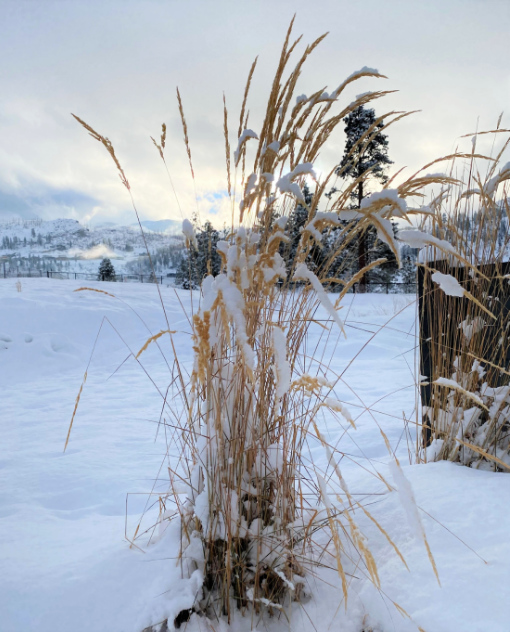GARDENING WITH NATURE
Article by Sigrie Kendrick
Think outside the box when prepping for winter
As gardeners, let’s remember to switch up the traditional garden tasks and think in a different direction: perhaps a more environmentally friendly one, that also provides us with more winter garden interest.
For instance, fall is the time of year when ornamental grasses shine. Many are in bloom and at the peak of their beauty.
What poet within us wouldn’t be charmed by the gentle way their graceful seed heads sway in the breeze and dance on the long stalks they’ve been growing all season? Grasses really add movement to your garden—unless you chop them down prematurely.


I recently had the opportunity to consider the importance ornamental grasses hold in our gardens as I cut down literally hundreds of Calamagrostis x acutiflora ‘Karl Foerster’, commonly known as Feather Reed grass, at a client’s property.
So often clients want their grasses razed to the ground before the onset of winter as they
perceive the standing grasses to be “messy” rather than graceful.
Often, land care providers such as landscapers are all too happy to oblige as that means one less task facing them in the spring.
Instead of this perverse desire to tidy in the fall why not take into consideration all the benefits of leaving ornamental grasses over the winter?


What about ecology?
From an ecological standpoint there also are many reasons to leave your ornamental grasses and your perennials standing over the winter. They provide needed habitat for birds and a myriad of other wildlife, as well as for beneficial insects to overwinter.
The seed heads of ornamental grasses and also annuals and perennials which have gone to seed, provide food for birds, who have to forage widely during the colder months, just to survive. They also provide great erosion prevention and slope stability, especially where wildfire has run through the previous season.
The time to shear your ornamental grasses is when you begin to see new growth at the base sometime in spring. Then, don’t toss out the cut grass. Instead, find a spot in your yard where it will be out of your way, but will provide valuable habitat for beneficial insects.
Perennials can also be pruned in early spring, when new growth begins to be visible, while annuals can be pulled out as soon as the ground softens in late winter or early spring.
Remember too that the fallen leaves from deciduous trees should also be left where they fall, rather than being neatly raked up and composted elsewhere in the fall. Those rotting leaves are like gold to a gardener and they provide habitat for insects and wildlife while they decompose over winter.
They also suppress weed growth and protect the roots of perennials over winter and what’s left can be gently dug into the soil come spring.
So, leave the leaves, don’t mow down the grasses and allow perennials and annuals to go to seed (unless they tend to be invasive!)



Love reading your posts, so much valuable information.
We are trying to be more environmentally conscious with our yard.
Xeriscaping is what we’re working on now